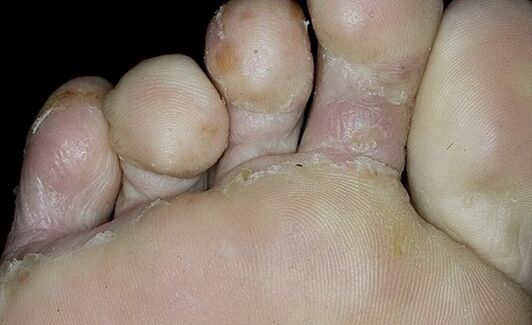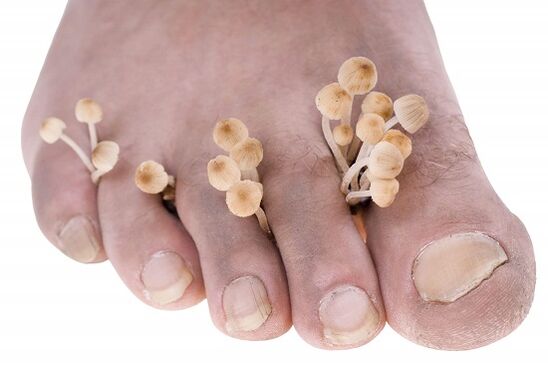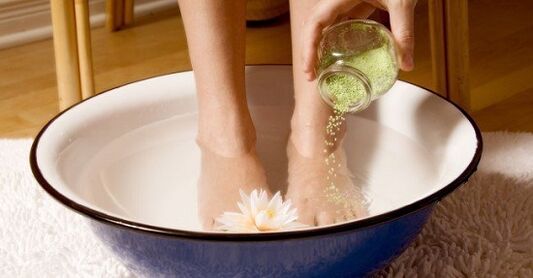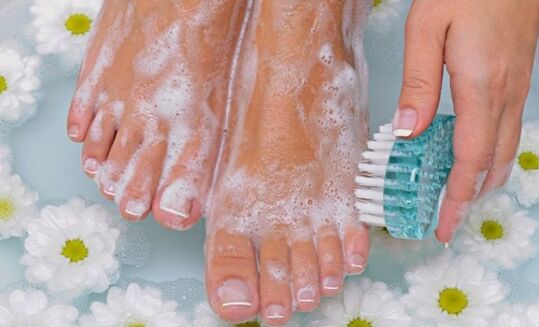In the minds of many, fungal patients are often associated with clutter, sloppiness, and dirt. This stereotype is not entirely true. In the modern world, even the most meticulous purity is not immune to fungal infections. Moreover, a person who leads an active and healthy lifestyle has a higher risk of catching it than a classic couch. If the skin between your fingers turns red, peels and cracks, your nails turn yellow and crumble, and the unbearable itching doesn’t go away in a minute, you probably have a fungus.
Pathways of infection
Medical statistics say that every 4-5. A person on our planet suffering from toe fungus. The danger of infection exists everywhere: in the pool, sauna, gym, public shower, shoe store, on the beach, and even your own shoes often become an excellent environment for living and actively breeding fungi.

Walking barefoot, wearing someone else's or wet shoes, sharing personal hygiene items (towels, manicure and pedicure tools), dirty socks, excessive sweating, degenerative foot diseases, excess weight, circulatory disorders - these and other factors directly or indirectly lead to infectionsfungal infection.
Healthy nails are practically invulnerable to fungi, while nail plates, altered under the influence of some traumatic factor, are easy prey for him. The same thing happens with the skin - microscopic cracks on it become the gateway to infection.
The infection is most often caused by fungal parasites called dermatophytes, less often by yeasts and molds. Fungi on the fingers of men and women are equally sick. The risk of infection increases with age. Thus, children relatively rarely become victims of this parasite, while every other adult after the age of 70 is its active vector.
The first manifestations of fungus on the toes

In most cases, a foot lesion with a fungal infection occurs gradually according to the following pattern:
- the first signs in the form of peeling skin, burning and itching are noticed between the fingers;
- the skin reacts to the infection by creating blisters, after a while they burst;
- cracks and grooves appear at the site of the bubble; the itching intensifies;
- entering the nails, the fungus actively multiplies, gradually penetrating the nail plate, slowly and for a long time destroying it;
- the plaque thickens, peels, crumbles, acquires unnatural jaundice.
Dermatophyte fungi appear as bright yellow spots or streaks closer to the edges of the nail. Over time, the infection moves to its central part, the skin in the interdigital region cracks and a strong itching is felt. Yeast fungi feed on the nail plate, thinning it on the side. As a result, waves, furrows, cracks appear, the nail becomes yellow and separates from the bed. First, the yeast attacks the creases of the nail. Reddened, thickened and swollen, silvery scales appear along the edges. It is possible to attach a secondary bacterial infection with subsequent fertilization. Molds superficially affect the nails, changing their hue from yellow and green to brown and even black. These fungi are especially active in conditions of disturbed nail plate nutrition.
Why can't you hesitate to visit a doctor?
Treatment should be started as soon as possible. It is good if this happens before the infection, which is usually first localized between the toes, spreads to the nail plate. Seeking early medical help ensures faster healing and healthier nails.

Mycologist deals with the treatment of various fungal skin lesions (mycosis). It is difficult to find doctors of this profile in state clinics. In the absence of this, you can consult a dermatologist. The task of the specialist is to assess the degree and depth of the lesion, take a scraping of the tissue to determine the presence and type of fungus, to compile a competent therapeutic scheme.
Before starting treatment, disinfection operations should be performed, which include treating all shoes with a solution of vinegar or formalin. The bad smell of these products makes them uncomfortable to use. To solve the problem, you can buy a special device at the pharmacy that disinfects shoes with ultraviolet rays.
Traditional treatment of fungus on the toes
Toe fungus can be treated with local, systemic or combination therapy.

Each treatment includes the use of antifungals (antifungal agents):
- Topical treatment (ointments, creams, sprays). Antifungals for external use and other drugs with the active ingredient clotrimazole, naftifine hydrochloride, ketoconazole, terbinafine hydrochloride or bifonazole. In case of minor damage to the nail plate, the use of antifungal varnishes is recommended. Varnishes are applied throughout the year, gradually reducing the frequency of use (from 4 to 1 time per week). Topical remedies effectively relieve itching and burning, reduce dandruff, cracks on the skin between the fingers, but are not able to completely cure the disease.
- Systemic therapy: general antifungals. Such treatment is appropriate in case of complete damage to the nail plate. But there are certain contraindications to systemic antifungal drugs: they cannot be taken by pregnant and breastfeeding women, people suffering from kidney and liver diseases, and young children.
- Comprehensive treatment. It includes local and systemic therapy.
Patients often complain about the lack of effectiveness of traditional therapy and resort to treatment with folk remedies. In the background of such complaints, the opinion was created that the foot fungus is an incurable disease, it is only possible to temporarily remove its symptomatic manifestations (itching, peeling, cracks). Why is the patient's dissatisfaction noticed? Everything is very simple. In fact, completely curing the fungus is difficult, but possible. The main thing is to adhere to the principles of regularity and duration. It is very important to perform all therapeutic activities on a daily basis and not to interrupt what you have started halfway. You need to be prepared for long-term treatment (usually 3-12 months), which makes sense to implement until new healthy nails grow back. In advanced cases, it is necessary to remove the affected nail plates and only then wait for the appearance of new ones.
Treatment of fungus on the toes folk remedies
Recipes of traditional medicine are very effective in removing or reducing the severity of such manifestations of fungi as itching, burning, cracking, peeling and redness of the skin between the fingers. Some patients claim to have been able to completely cure the disease using only folk remedies.

So, to deal with fungus:
- Soak your feet in apple cider vinegar, wine vinegar or table vinegar.
- apply 1 drop of iodine to each nail twice a day;
- wipe skin and nails with salicylic ointment;
- wash your feet with laundry soap;
- make dressings of garlic and butter;
- lubricate the affected skin with a mixture of garlic juice, alcohol (1 tablespoon) and water (2 tablespoons);
- treat the affected areas with an alcoholic tincture of propolis.
According to reviews, garlic and propolis are especially effective in fighting fungus. It is important to understand that the duration of treatment with folk remedies has its limits. If within 3 months the skin cracks and does not get the same look, it makes sense to seek the help of traditional medicine.
Despite the good efficiency of treatment with folk remedies and the success of modern pharmaceutical products in finding new effective drugs, mycosis of the feet remains the most common fungal disease today. Nevertheless, it is gratifying that in the last 20-30 years the number of successfully cured patients has been decreasing every year.

























